Breast Enlargement and Implant Cost Turkey Benefits, Options and Risks

- Breast Enlargement Methods
- Implant or autologous fat for breast enlargement: which is the better method?
- Breast Enlargement Without Surgery
- Breast Augmentation Costs in Europe and Turkey
- Breast Augmentation Surgery Details
- How Is Breast Implant Surgery Done?
- Breast Augmentation With Autologous Fat : How is it done?
- What to Consider After Breast Augmentation
- Risks of Breast Augmentation
Read here which methods can be used to enlarge the breast and what advantages and disadvantages they have.
The female breast consists of a glandular body, fat and connective tissue. The size and shape of the breasts vary from woman to woman - they are influenced by genetics, physique, weight, age, hormonal balance and pregnancy. Some women are not satisfied with their breast size and wish for a more voluptuous breast. Breast surgery is one way to do this. Another reason for breast augmentation surgery is that a woman has a deformity and would like to have it corrected, such as a significant asymmetry of the breasts. Or the breast had to be removed due to cancer and now a breast reconstruction is to be carried out in which the original breast shape is restored.
Breast augmentation was the most common cosmetic surgery in Europe in 2020.
The volume of the implant that can be used in breast surgery usually ranges from 80 to 750 ml. 200 ml is about the size of a bra cup. Patients most often opt for an implant that is between 200 and 350 ml in size. However, there is no general rule or table that shows which size is best. Factors such as the individual physique, stature and tissue composition of the breast play a crucial role in breast augmentation. A detailed consultation is therefore a basic requirement for breast surgery.
Read here what you have to consider when having a breast augmentation:
Breast Enlargement Methods
There are mainly two techniques to perform breast augmentation:
- Doctors enlarge breasts with implants
- The breasts get more volume with the help of autologous fat
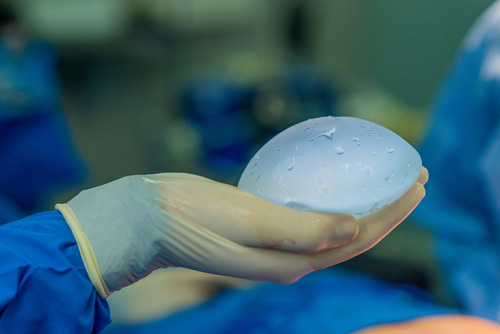
Breast Enlargement With Implants
Implants differ in terms of shape, size and filling material. The choice of the implant depends on the one hand on the personal wishes of the patient and on the other hand on the individual anatomy (body build and size). The shape of the chest, the amount of breast tissue present and the condition of the breast skin also play an important role.When choosing the implant, the patient should definitely consider that the operated, new breast must fit the rest of the figure, otherwise the result will look unnatural. For example, if you are naturally petite, you should not choose implants that are too large, as the entire stature will then not be consistent. On the other hand, if a woman has a curvier figure, a slightly more voluptuous breast can suit her visually. Plastic surgeons also advise against using only the bra cup size as a guide when deciding on the future breast size and saying "I would like to have a D cup in the future", because a cup size of 90 D is larger than 75 D. The result of the operation can then look significantly different than what the patient imagined.
Therefore, every woman should seek detailed advice before the procedure. The doctor should introduce her to the different breast augmentation options and tell her about the pros and cons. It is also important to show the patient before and after photos of the operated breasts to illustrate what the result can look like. It is also recommended that the patient be given trial implants of different sizes, which she can put in her bra and see how it changes the appearance of her breasts. The patient and doctor then decide together which material and implant size should be used.
Material of Breast Implants
Breast implants consist of a silicone shell (silicone is a rubbery plastic made from silicon) and filling material, which today is made up of either silicone gel or physiological saline: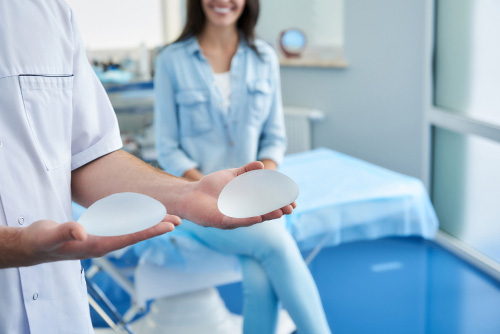
- Breast implants with silicone gel
- Breast implants with saline solution
The shell has either a smooth or roughened surface. An implant with a smooth surface feels softer and therefore more natural, but capsular contracture develops more frequently (see section "Risks") than models with a roughened surface. With the latter, the implant is also more stable in the chest area. Surgeons therefore mostly use roughened implants.
Shape of the implants
Doctors distinguish between round and teardrop-shaped (they are narrow at the top and round at the bottom) breast implants. While a round implant particularly emphasizes the décolleté, the teardrop shape is most clearly based on the natural shape of the breast. Doctors therefore also refer to teardrop-shaped models as anatomical implants.The curvature of the implants is also different, models with a central curvature achieve a round breast shape. All implant variants are available in different heights and sizes, the filling quantities range from 80 to 750 milliliters. For orientation: 200 millimeters corresponds approximately to a cup size.

The Position of The Implants
When planning breast surgery, the doctor and patient also decide where the implants should be placed: the implant can be positioned above the pectoral muscle and under the pectoral muscle. If the patient has enough tissue, the doctor usually inserts the implant over the pectoral muscle (subglandular technique). If the patient has little tissue, which is usually the case with very slim women, an implant that sits over the pectoral muscle would be easy to see and feel. Therefore, the doctor will usually place it under the pectoral muscle (submuscular method).
Breast Enlargement With Autologous Fat
The autologous fat therapy (also called lipofilling) consists of two steps: First, the doctor removes fatty tissue from the abdomen, hips or thighs of the patient. In a sterile process, the tissue is then processed in such a way that only fat and stem cells remain. These can then be injected into one or both breasts via cannulas at specified points.There is also the option of injecting hyaluronic acid into the breasts. But while autologous fat usually shows an effective result in the long term, the hyaluronic acid has to be injected again and again in order to preserve the result.
Implant or autologous fat for breast enlargement: which is the better method?
The great advantage of autologous fat treatment is that the injected fat cells are autologous material and not foreign bodies. As a result, no capsular fibrosis develops. In addition, no surgical incisions are necessary for the autologous fat therapy, but the required tissue enters the body via a cannula. So there are no scars in autologous fat treatment. Since autologous fat treatment procedure does not necessarily require general anesthesia, the procedure also poses fewer risks. With an implant, the edge under the breast skin can also be seen and felt, which is also not the case with autologous fat tissue.The disadvantage of autologous fat, however, is that it can only achieve a volume increase of half a bra cup size to one. Doctors can only achieve greater breast augmentation with implants.

Breast Enlargement Without Surgery
If you would like to have a larger breasts, but don't want to go under the surgical knife, you have alternative options:
- Push-up bras: these lift the breasts slightly and, with the help of foam cups in the bra fabric, optically ensure a larger bust size. There are models where the foam pads are removable. If a woman has breasts of different sizes, it can help to remove the pad from the cup for the larger breast and thus compensate for the difference.
- Strength training: The chest muscles can be strengthened with the help of muscle exercises. This lifts the breasts and makes them firmer.
- With an upright posture, in which the woman keeps her head straight, pulls her shoulders back slightly and stretches out her breastbone a little, the bust size comes into its own.
- With the help of special creams, the décolleté can be intensively cared for, which contributes to beautiful breasts.
Breast Augmentation Costs in Europe and Turkey
The cost of a breast augmentation depends, for example, on which surgical method and which implant model the woman decides. Depending on the clinic, the price in Europe is between 3000 and 7000 euros.Only in some cases do health insurance companies (at least partially) cover the costs of breast surgery, for example if the patient has had breast cancer and the breast is to be restored after the tumor has been removed. Or, when a woman has suffered a serious injury and the breast has had to be (partially) removed. Or if your breasts have a hereditary malformation (e.g. tubular breasts). For the assumption of costs, the opinion of a specialist is necessary.
However, if a woman only decides to have such an operation for aesthetic reasons, she has to bear the costs herself.
Some clinics offer a loan to finance breast augmentation. Depending on the conditions, however, it may be cheaper to pay the required amount with the help of a regular bank loan.

Breast Augmentation Surgery Details
- Duration of the procedure if the patient opts for implants: Approximately one to two hours.
- Anesthesia: The patient is usually given general anesthesia.
- Hospital stay: One to two days.
How Is Breast Implant Surgery Done?
There are three ways to open the chest area during surgery. The surgeon can make the four to five centimeter long skin incision :
- in the skin fold below the breast (so-called submammary access)
- at the bottom of the areola (periareolar approach)
- or in the armpit (axillary access).
The surgeon also has several options for placing the implant in the breast:
- partially under the large pectoral muscle (also called subpectoral)
- completely under the pectorals (submuscular)
- between mammary gland and pectoral muscle (suglandular)

Placement of the implant under the pectoral muscle
Advantages:
- The implant is stable under the tissue and muscles. The risk of it slipping is therefore low.
- The risk of capsular contracture is also lower.
- The implant is hardly palpable and is also visually less noticeable.
- Placement under the pectoral muscle makes it easier for the doctor to better detect breast cancer during a mammogram.
Disadvantages:
- The recovery time is longer and also more painful.
- In the first week after the procedure, the patient's mobility is more restricted.
Placement of the breast implant over the pectoral muscle
Advantages:
- This procedure is easier to perform and the patient experiences less pain afterwards.
- In the case of patients who have sagging breast skin, the skin can be filled out by the implant, making it appear firmer.
- The breasts retain their natural shape and mobility.
- The implants are less disruptive during sport because they do not move when the pectoral muscle is contracted.
Disadvantages:
- The implants are less stable at this point and can slip.
- They are often visible and palpable, especially in slim patients.
- An X-ray examination (mammography) of the breast is made more difficult because of the position of the implant.
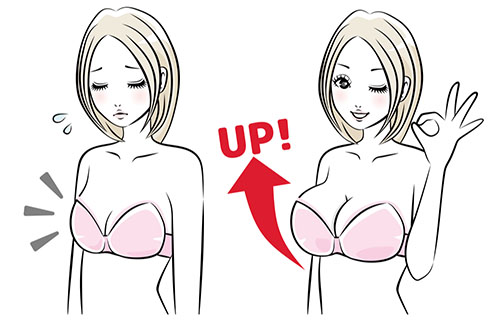
In short:
- Under the pectoral muscle: Preferred method for slim women whose own tissue does not adequately cover the implant. The risk of capsular fibrosis is low with this method, but the implants can move with this method, for example during sports
- Over the breast muscle: This method is suitable for women who have more of their own tissue. The décolleté is easy to shape with this procedure, the healing process is shorter and less painful. However, there is a risk of wrinkling and the sinking of the implant, and a mammography is no longer possible after this procedure
Breast Augmentation With Autologous Fat : How is it done?
Duration: The procedure lasts between one and three hours.Anesthesia: The patient will be given either general or local anesthesia.
Hospitalization: The operation can be performed on an outpatient basis or as an inpatient (with a subsequent overnight stay in the clinic).
The autologous fat therapy consists of two steps: First, the doctor removes fatty tissue from the abdomen, hips or thighs of the patient. This is then specially prepared and injected into the breast at specified points.
Since the body breaks down some of the fat cells, the surgeon usually adds more autologous fat than is actually required for the desired volume. So it can happen that the breasts are initially larger than discussed. However, since the fatty tissue decreases somewhat over time, the planned volume is achieved.
However, it takes three months for the new breasts to have their final shape. After that period you can assess the outcome of the surgery.
What to Consider After Breast Augmentation
Treatment after surgery with breast implants
After the procedure, the patient usually stays in the clinic for one to two days. The day after the operation, the doctor checks the wound, examines the breasts, armpits and checks for swelling, bruising and sensory disturbances. Doctor also checks whether the implants are in the correct position. If doctor has inserted fine hoses (drainage in technical jargon) in the wound area after the procedure, he removes them after one or two days. The sutures are removed after ten to fourteen days (unless they resolve themselves after a period of time).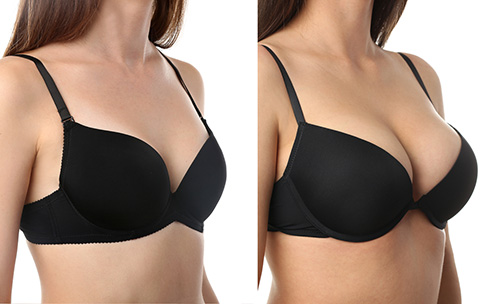
The following symptoms can occur:
- Pain: The operated breasts can initially be swollen and painful. This is normal but can last up to fourteen days. To relieve the symptoms, the patient can take a painkiller.
- Feelings of tension: There is also often a feeling of tension in the breasts after the procedure; it can be felt for several weeks, in rare cases for several months.
- Bruises: Bruises can also occur, but they resolve within a few days or weeks.
The patient should take care of her operated breasts for the first eight weeks after the procedure and avoid any pressure on these parts of the body. The following measures are therefore important:
- The patient's freedom of movement is severely restricted for up to ten days. Those affected should refrain from even simple activities such as getting groceries from an upper shelf or closing the window.
- Showering is allowed again after the stitches have been removed, bathing only after six weeks. Sunbathing and solariums should be avoided completely at first. Afterwards, the scars should be consistently protected from sunlight with sunscreen (SPF 50+).
- In the first six weeks, the woman should sleep on her back or side to prevent the implants from slipping. During this time, she should also not exercise and avoid heavy physical exertion such as gardening. If sport is possible again, she should wear a tight-fitting sports bra for the first six months.
- It is also advisable to refrain from smoking as much as possible, as nicotine can weaken wound healing.

The patient should also protect the breast area during sex and definitely prefer gentle lovemaking at first. It can happen that the woman has a loss of sensation in her breasts for a few months. This is normal and usually disappears completely, only in rare cases does it remain permanently.
If the patient has a job that is not physically demanding, such as office work, she is usually able to work again after ten days. In the case of physically demanding jobs, you should discuss with the doctor treating you when you can go back to work.
- Scar care after breast surgery: Scars should first heal completely, i.e. be dry and free of crusts, then the patient can treat them regularly with a scar massage. Here you apply some nourishing greasy cream (unscented) to the scar and then use your fingertips and light pressure to make circular movements along the scar for five to ten minutes. The massage should be practiced two to three times a day.
Treatment after the operation with autologous fat
As the fat cells enter the body through cannulas and come into direct contact with the surrounding tissue, swelling may occur for a few weeks, after about a week the small wounds healed completely.In order for the transplanted fat cells to heal well, the patient should wear a support bra for a few weeks. Other tight pieces of clothing are taboo, however, as they press on the transplanted autologous fat and can disrupt the healing process.
The affected person should also take it easy in the first six weeks after the procedure, avoid physical exertion in everyday life (especially arm movements!) and refrain from sports.
During the first few months, the body breaks down some of the fat cells, which is why the breast volume decreases a little. The fat cells only grow gradually. The final result is therefore only visible after three months. This usually remains permanent. Of course, there can still be changes afterwards, for example if the patient gains or loses weight, or if she is pregnant or breastfeeding.
Another breast augmentation with autologous fat is possible. However, the intervention is possible after three months at the earliest.
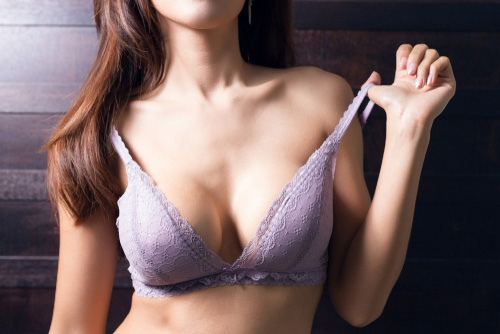
Risks of Breast Augmentation
As with any surgical procedure, there are certain risks associated with breast augmentation. Which includes:
- Bleeding during surgery and postoperative bleeding
- Anesthetic risk
- Infections
- Injury to nerves and soft tissues
- Blood transfusions may be necessary, which carry a risk of infection
- If the surgeon moves the nipple during the procedure, sensitivity disorders (which can go as far as numbness) can occur later and the ability to breastfeed can be impaired or destroyed
Risk after breast implant surgery
Complications that can arise after the insertion of the implants:
- The implant can crack and the filling material can leak into the surrounding tissue. It can also happen that fluid from the tissue gets into the implant if the cover is torn
- Wound infection and wound healing disorders can occur
- The implant may twist or shift (doctors call this a dislocation)
- Asymmetries can arise in the breasts
- Permanent scarring can result
- A foreign body sensation can occur due to the implant
- Capsular contracture can occur
This layer of connective tissue usually remains soft and elastic and is not even noticed by the patient. However, in some cases, it thickens and hardens. This can lead to feelings of tightness and pain in the chest. In addition, the implant can shift and the breast can become deformed. In some cases, capsular contracture becomes so severe that the surgeon has to replace the implant or remove it without replacement. Removal may also be necessary if the implant is damaged.
60 percent of all capsular contractures develop in the first six months after the procedure, 90 percent within the first year. It occurs in up to eight percent of patients.

Mammography after breast augmentation: according to current knowledge, silicone implants do not increase the risk of breast cancer. Nevertheless, regular check-ups are of course important. Cancer screening is made somewhat more difficult by breast implants because it is more difficult to detect a tumor that may be present in a mammogram. Therefore, additional examinations (sonography or magnetic resonance imaging (MRI)) are usually carried out on a patient.
It is advisable to bring the implant passport with you to the examination, in which the material, size, shape and manufacturer of the implant are listed. With the help of this data, the radiologist knows during a mammography which material is in the patient's breast and can adjust the radiation device accordingly.
Risk After Breast Augmentation with Autologous Fat
Risks of injecting autologous fat are:
- Bleeding
- Anesthetic risk
- Infection
- Pressure damage to nerves and soft tissues
- Swelling after the procedure
صور
11/09/2024 02:44
صور
In accordance with Article 10 of the Personal Data Protection Law (PDPL,KVKK) titled Data Controller's Obligation to Disclose, we use cookies in accordance with the legislation, limited to the purposes specified in the privacy policy.

